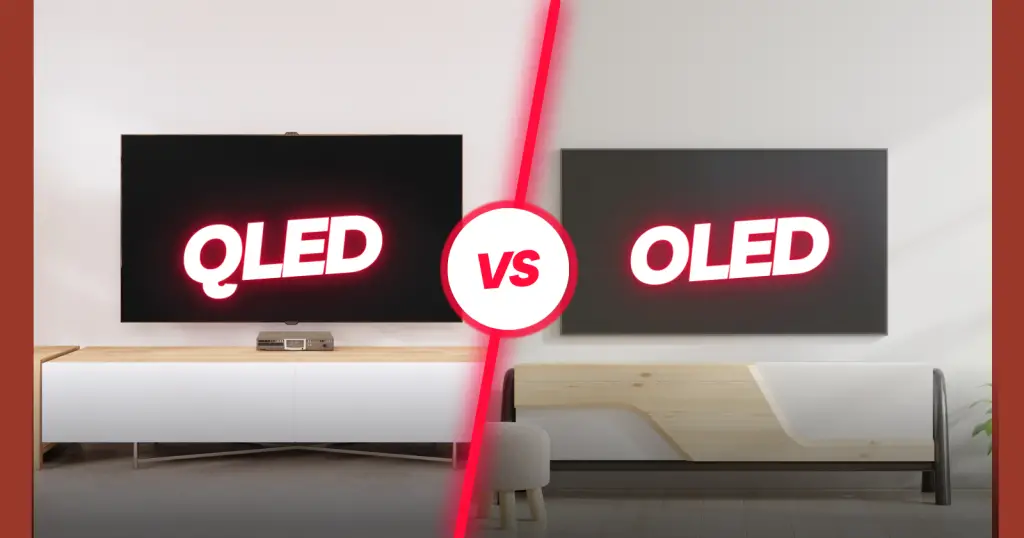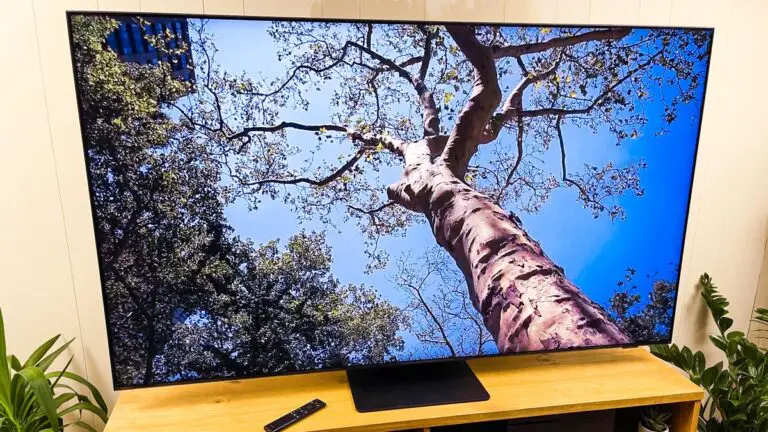Remember, in the 90s, we had those big TVs on a table, which took up significant space in the living room? Initially, they came without remotes, and changing channels seemed like a task. As technology changed with leaps and bounds, the era of QLED and OLEDs came. One might need clarification regarding the difference between QLED and OLED.
Before laying your hands on a TV, do read this article. It will give you a better insight into the difference between QLED and OLED. Do know your options well and have detailed research about the QLED and OLED, as one may invest in a TV once in a while. Now, without beating around the bush, we’ll go ahead with the difference between QLED and OLED.
What is the Best Choice of TV for Gamers?
If you intend to play video games on your QLED or OLED, you may also need to look at other aspects rather than just knowing the difference between QLED and OLED. You need to have an HDMI 2.1 port for an optimal gaming experience. One must also look for input lag in a LED before buying one.
Moreover, OLEDs provide near-to-natural contrast, making the gaming experience breathtaking. But, QLEDs offer a brighter image reproduction, which may enhance the visibility within the games. Overall, a TV set with low input lag, variable refresh rate (VRR), and an HDMI port 2.1 may be the best option for gamers.
What Is A QLED?
QLED is an acronym for Quantum Dot Light Emitting Diode. The QLED TVs provide a broader color spectrum achieving higher brightness levels. The QLED is loaded with LEDs that emit blue light, which is converted into colors for picture production. The image colors have more excellent saturation, unlike conventional LCDs and LEDs.
Benefits of QLED
Life-Like Colors
As discussed earlier, QLEDs run on the quantum dots technology and aren’t self-emissive. Therefore, a backlight is required, connected to a color filter layer fitted onto the screen. The quantum dots enhance the color contrast, creating pictures mimicking true colors.
A Reliable Choice for Smaller Rooms
For a better viewing experience, you should have an adequate distance from your viewing space to the TV. To know what suits your room best while discussing the differences between QLED and OLED, divide the length you’ll watch your TV by 2.5. This would give you the recommended size for your TV. QLEDs are even available at 32″, unlike OLEDs.
A Good Option for Brighter Rooms
QLEDs are designed in such a manner that they offer optimal viewing experience under all lighting conditions. The light reflection is minimal, along with higher light output; therefore, you won’t notice a slight distortion in image production in a QLED.
No Burn-in Risks
Burn-in is the residual graphics or dark spots that appear permanently on the screen. It happens after a particular picture is left for prolonged periods on the screen. The quantum particles in QLEDs are inorganic and prevent burn-in by obstructing the image from getting burnt on the net. This provides a longer life to your QLED.
Price Range
If you plan a TV that is easy on pockets and may not break the bank, QLED is your go-to. Although, as technology is advancing, the price difference is narrowing down. But, you may get a smaller TV in QLED if you have limited space or a smaller room to enjoy your movie nights.
| PROS | CONS |
| Higher brightness than OLEDs | Bulkier than OLEDs |
| Range of screen sizes is good | Slow refresh rates |
| Easy on pockets | Blacks are less convincing |
What Is An OLED?
OLED is an acronym for Organic Light Emitting Diode. An OLED has no backlight, unlike a QLED TV. Each OLED pixel has its light source; therefore, it offers impeccable contrast and black levels with top-notch motion reproduction. As we discuss the differences between QLED and OLED, the benefits of OLED are mentioned below.
You might like to read: Samsung LED vs QLED: which is better?
Benefits of OLED
Color Contrast
As we previously discussed, each OLED pixel has its own light source. A white pixel next to a black one won’t struggle to reproduce the exact color. OLEDs offer sharp details and a strong contrast with true blacks on the screen.
Cinematic Quality Of Pictures
The OLEDs produce deeper blacks, as they have individual pixels. This technology, therefore, offers a superb watching experience. OLEDs also support HDR mode, which provides excellent brightness and color range.
On-Screen Motion
The response rate in OLEDs is much faster than that in LCDs or QLEDs. The response rate provides sharper and smoother images, ideal for action movies or sports enthusiasts. The strain on the eyes is also negligible, considering the faster response rate.
View Angles
When we discuss the differences between QLED and OLED, one should remember the viewing angles. Viewing angles are essential for optimal viewing while sitting or lying on the couch. OLEDs create wide viewing angles; therefore, you’ll get a good experience wherever you watch the TV.
Size of the Room
Having an OLED will only be preferred if you have a smaller room. The sizes of the OLEDs come in are greater than 48″. So, the size of the room matters for optimal viewing experience. Whereas you can get your hands on QLED TV even at 32″ length.
| PROS | CONS |
| Impeccable color precision | Limited brightness |
| Higher refresh rates | Chances of burn out |
| Slim design | Expensive to buy one |
Go through the YouTube video link for ease of understanding the difference between QLED and OLED attached below.
Check out this video: What’s the Difference Between QLED and OLED TVs?
Conclusion

The technologies in both the TVs are impeccable. A QLED may be the preferred choice for many for a couple of reasons. You’ll get brighter images, and the risk of burnout is minimal; therefore, the TV may last longer than others. Above all, buying one may not cost you an arm and a leg.
Whereas OLEDs are concerned, they offer better viewing angles than QLED, deeper blacks, and top-notch contrast. Moreover, OLEDs’ power consumption is far less than a QLED. If you are a gamer, OLED may be your best choice. We hope the difference between QLED and OLED may have been clear to you in this article.






